|
Embroidery Threads
Different types of hand embroidery threads
Hand embroidery threads come in various materials and textures.
They come in a myriad of colors and different thicknesses too.
Store your threads carefully and away from sunlight to avoid the
fading of color and its quality. With good care, you can keep
and use your threads for many years. See those silk and wool
threads in this post?- they are 20 years old! The Rayon ones are
15 years old.
Knowing what thread to use in your project will help you in
making your project beautiful. Here is a list of the most common
ones.
 |
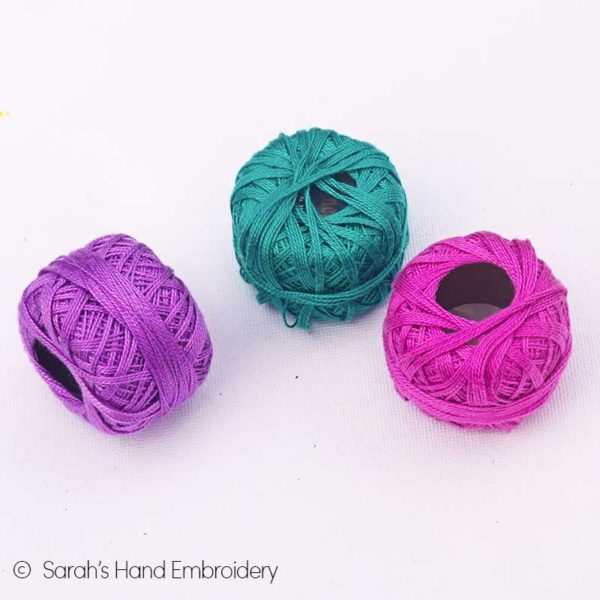 |
|
Stranded Embroidery Cotton: These are the
most common embroidery threads. It comes in a myriad
of colors, each identified by a color code. The
color codes are different for each brand. The
popular brands are Anchor and DMC.
The Stranded Embroidery Cotton is also called ‘the
embroidery floss’. It is made of 6 strands that are
separable and often separated to adjust the thread’s
thickness as required for the embroidery. For
reference, 1 strand of embroidery floss is excellent
for needle painting, while all the 6 strands are
applied on needlepoint.
Learn: How
to separate the embroidery strands. |
Perle Cotton: These are, probably, the next
popular thread in hand embroidery. They too come in
a variety of colors and each color is indicated by a
color code specific to the brand. They are commonly
used in needlepoint and surface embroidery.
The thread is not separable. They, however, come in
different thicknesses, each marked by a size number.
The thicker the thread, the lower the size number.
For a reference, Size #3 Perle cotton is roughly the
size of 6 strands of embroidery floss, and size #12
of embroidery floss is roughly the size of 1 strand
of embroidery floss. |
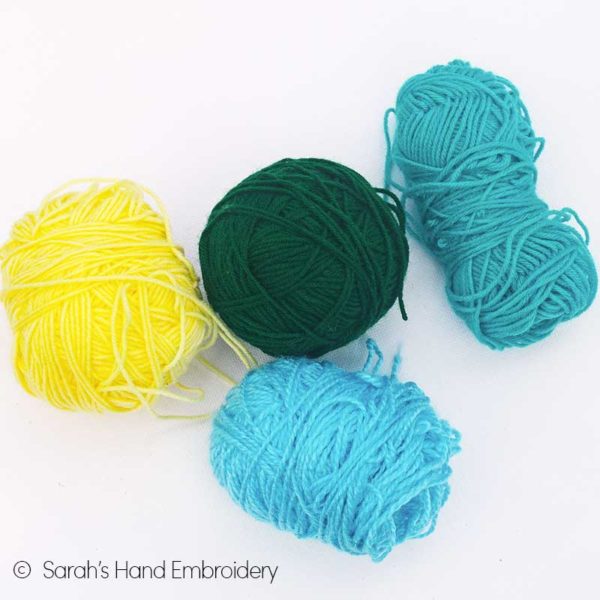 |
 |
|
Wool: Knitting
wool is often used in needlepoint and
cross-stitching, and in Crewel Embroidery.
The thickness of wool is often referred to as ‘yarn
weight’. It begins with 0, known as Lace,
which is the thinnest. This number moves up, one
number at a time, to reach 7, known as Jumbo,
the thickest.
The 0 weight yarn comes in 1-3 ply. Persian Yarn is
quite popular and comes in 3-ply, which can be
separated to adjust the thickness. Crewel Yarn is
similar to a 1-ply Persian Yarn and is excellent for
Crewel Embroidery. Tapestry yarn is non-separable,
but has a similar thickness to the 3-ply Persian
Yarn, making it apt for needlepoint. |
Metallic: Beautiful, but a wild child, the
metallic thread is often used as a highlighter in
surface embroidery. It is used in combination with
the other embroidery threads. Gold, silver, copper,
and platinum are the most popular colors, though
they can come in standard colors.
Metallic threads can be a challenge to work with. It
not only wears easily but also tangles and snags as
quickly. So, here are some tips- Cut shorter lengths
of thread each time. Use fewer strands to stitch. A
big needle will definitely help in reducing the
thread friction as it passes through the fabric.
Damping the threads lightly will help, or use a
thread conditioner to tame this wild thread a bit.
Patience is essential to work with this thread.
Avoid using this on fabric that undergoes heavy or
frequent washing. |
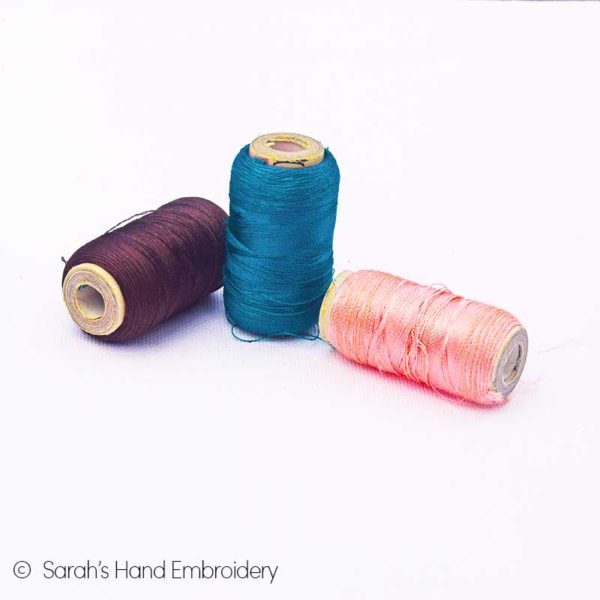 |
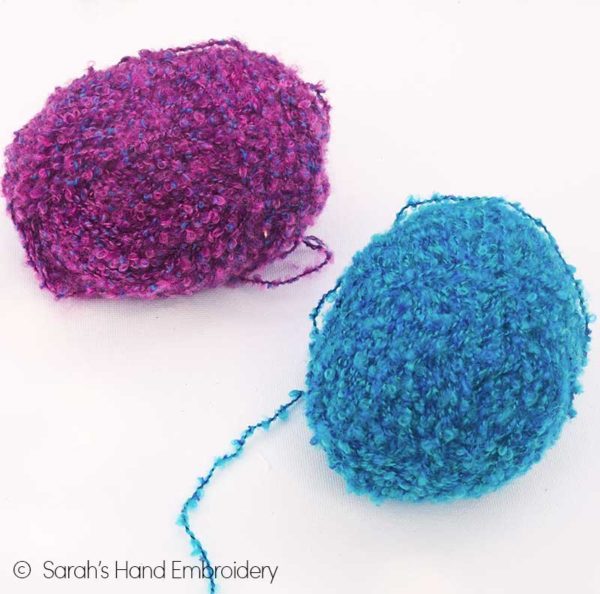 |
|
Silk: Silk threads often come in spools and
in vibrant colors. The thread is thin and needs to
be layered to make the required thickness. Silk
thread is great for needle painting and fine
embroidery. Being thin, it can be used to couch down
thicker threads. |
Novelty Threads: Novelty threads are
similar threads with fancy textures and are used as
an addition over other embroidery work. These
threads can come in cotton, synthetic, wool, and can
include laces too! |
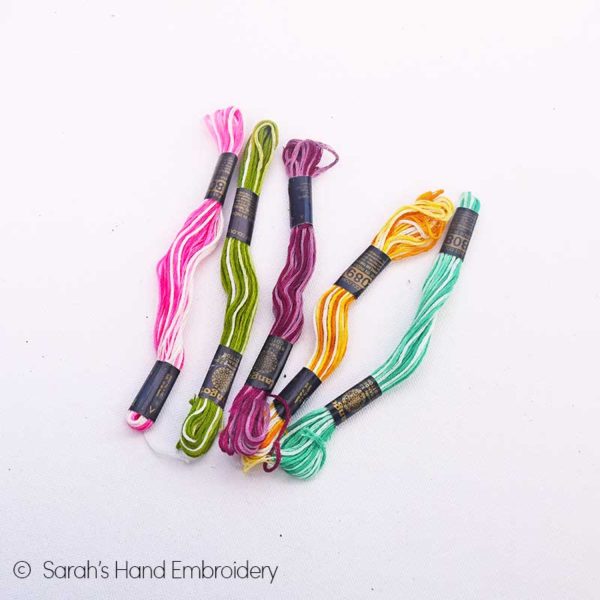 |
 |
|
Variegated: Variegated threads are threads
that combine different shades of a single color in
the same yarn. They can come in stranded cotton,
Perle cotton, silk, or even wool. The effect left by
these threads are beautiful and can be particularly
attractive when used cleverly on your project. |
Rayon: Rayon threads are synthetic and have
a high sheen. It got popular because it is
inexpensive and is mainly used in Brazilian
Dimensional Embroidery. This thread is manufactured
so that it gets a ‘z twist’ in contrast to the ‘s
twist’ on a cotton thread. Due to this, many
embroidery stitches need to be modified in their
technique to maintain the outcome. |
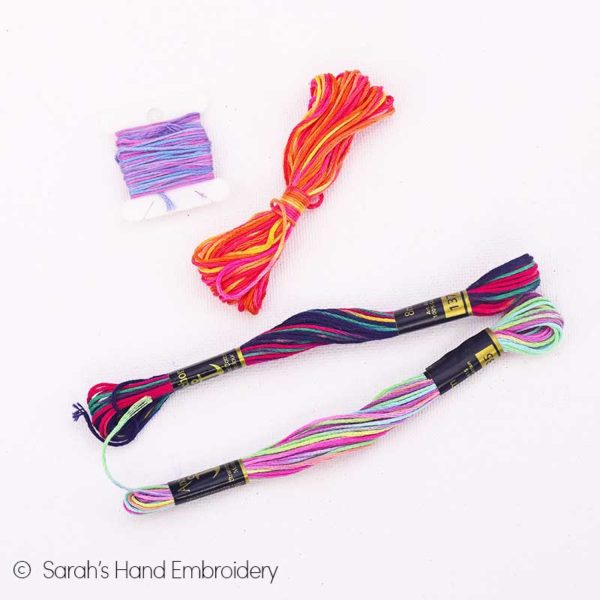 |
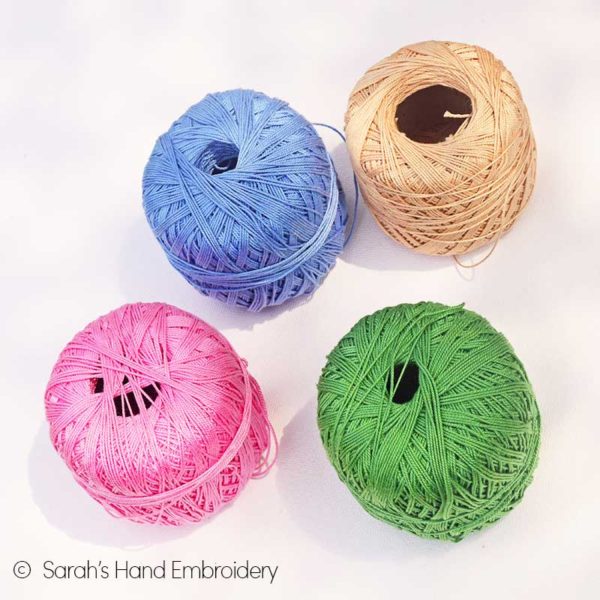 |
|
Overdyed threads: Overdyed threads include
two or three shades of different colors in a single
thread. They can come in stranded cotton, Perle
cotton, silk, or even wool. |
Crochet: Crocheting can be done using any
kind of thread. The crochet thread in turn can be
tried for hand embroidery too. It could wear off
easily while passing it through the fabric often,
and so, shorter lengths are cut in order to save
from the loss of sheen. |
Other Threads
|
Floche: Floche (pronounced
flosh) is, probably, a more sophisticated
version of the regular stranded cotton. It comes
in a similar way as the regular stranded cotton
but is much softer, shinier, and more luxurious.
Floche is made of five strands, but they cannot
be separated. It can also be expensive. |
Ribbons: Ribbons come in a variety of
kinds and can be made of silk, cotton, or
synthetic. The most common ones used in
embroidery is the satin ones. They come in a
variety of colors and has a smooth feel and
sheen to it. They carry in their thicknesses and
are selected based on the kind of project you
are using it for. |
|









